
How Korean carmaker Hyundai cracked the Indian market where European makers are struggling
The Korean company occupies the coveted No. 2 position in the Indian market and has gone public even as European and American carmakers are struggling to crack it
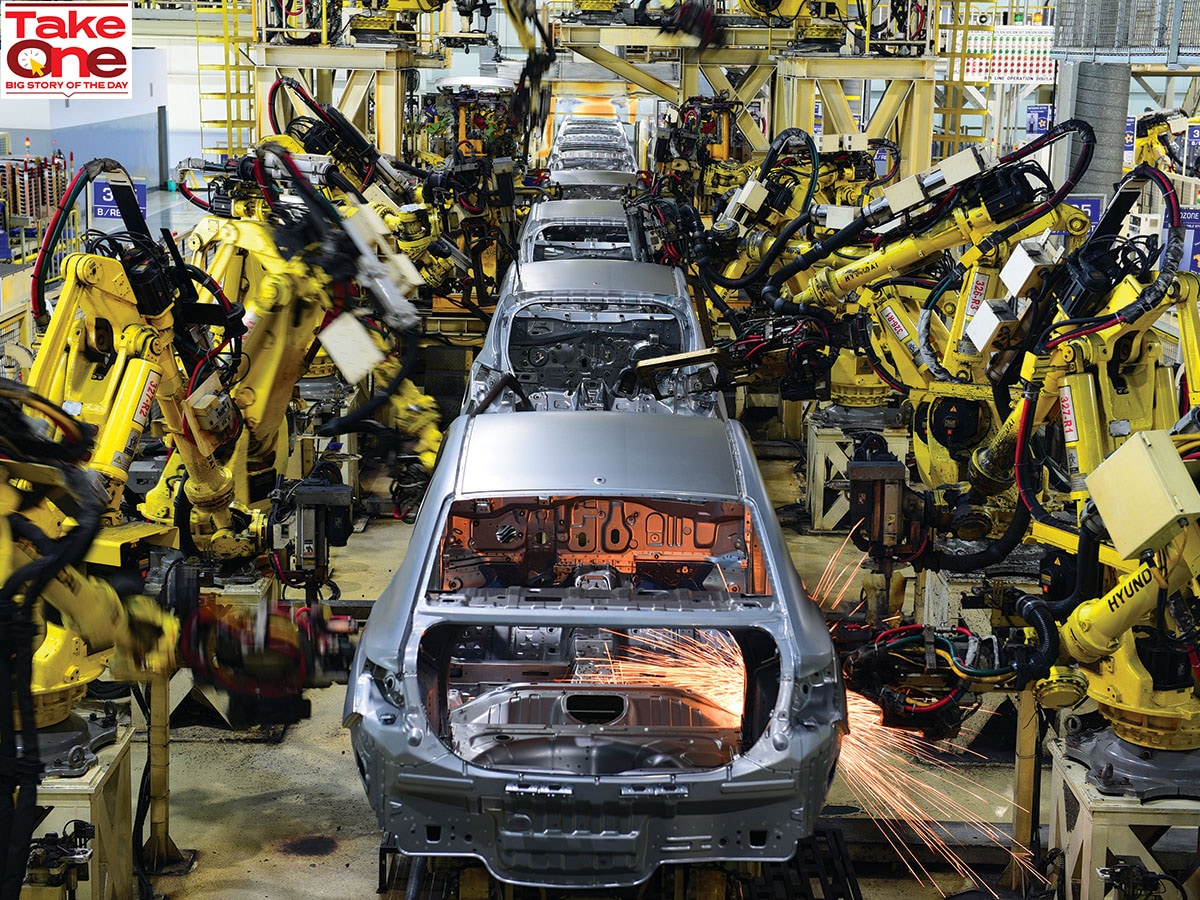 Hyundai has planned an investment of ₹32,000 crore in India over the next 10 years
Hyundai has planned an investment of ₹32,000 crore in India over the next 10 years
It’s a baffling tale in India’s automotive industry. On the one hand, two European automotive giants, the world’s second-largest and fourth-largest carmakers, just can’t seem to find their footing in the country. One wants to sell its stake, while the other is yet to crack into the top ten despite pouring billions. Both Volkswagen Group and Stellantis have been operational in India for more than 20 years.
Then there is Hyundai, the Korean automobile giant, which is set to reap over $3 billion from the country by selling 17 percent in the Indian subsidiary. The initial public offering (IPO), touted as the largest in the country, hit the bourses on October 15, when Hyundai put on offer for sale 142 million shares. Hyundai has fixed a price band of between ₹1,865 and ₹1,960 per share for the ₹27,870-crore IPO.
The listing also means it joins homegrown automakers such as Maruti Suzuki, Tata Motors and Mahindra as publicly-traded entities. Among them, the four publicly-listed companies control a little over 80 percent of the domestic market. Hyundai Motors India will be valued at some ₹1.6 lakh crore after the IPO, and a public listing is expected a week before Diwali. Hyundai is be the first carmaker to list after Maruti Suzuki went public in 2003.
Hyundai will use the proceeds to invest in new products, future technology and research and development capabilities of the India unit. In all, the Korean carmaker has planned an investment of ₹32,000 crore in the country over the next 10 years.
“India is among the fastest-growing economies globally, and, as this growth continues, the strategic importance of Hyundai Motor India will only increase,” Euisun Chung, the executive chair of Hyundai Motor Group, said during his visit to India in April. “By leveraging our strong reputation and competitive quality in India, we aim to expand exports to neighbouring countries, making India the global export hub to boost our regional market competitiveness.”
(This story appears in the 01 November, 2024 issue of Forbes India. To visit our Archives, click here.)




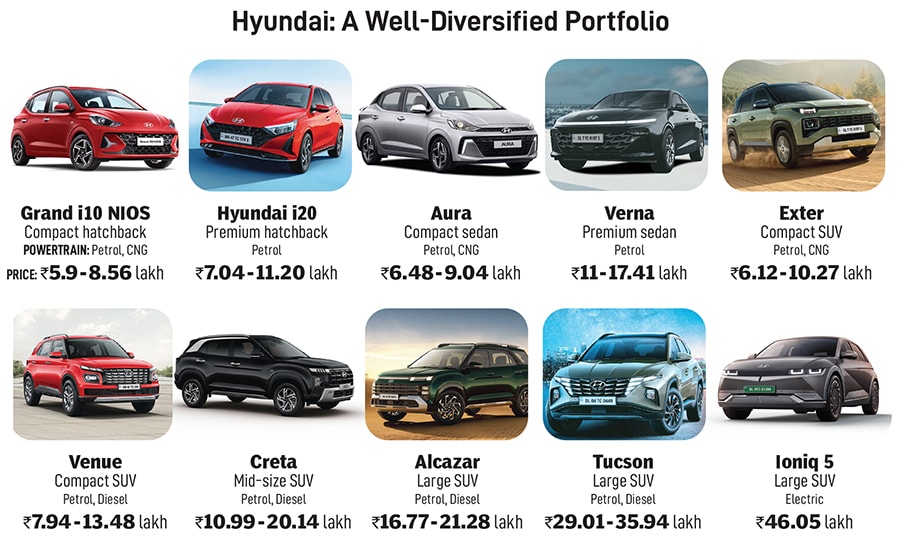
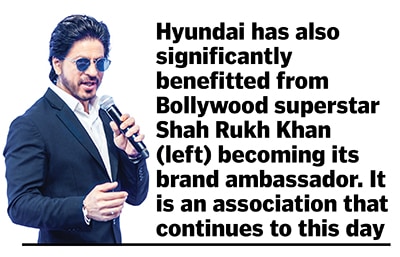 But, with the mid-size SUV market growing to 402,000 units from a little over 183,000 units in 2019, led by the foray of numerous models including Toyota’s Urban Cruiser Hyryder, Maruti Suzuki Grand Vitara, Honda Elevate, Skoda Kushaq, Volkswagen Taigun, Mahindra XUV400 and Citroen C3 Aircross, Hyundai has begun to feel the heat from domestic and global automakers.
But, with the mid-size SUV market growing to 402,000 units from a little over 183,000 units in 2019, led by the foray of numerous models including Toyota’s Urban Cruiser Hyryder, Maruti Suzuki Grand Vitara, Honda Elevate, Skoda Kushaq, Volkswagen Taigun, Mahindra XUV400 and Citroen C3 Aircross, Hyundai has begun to feel the heat from domestic and global automakers.
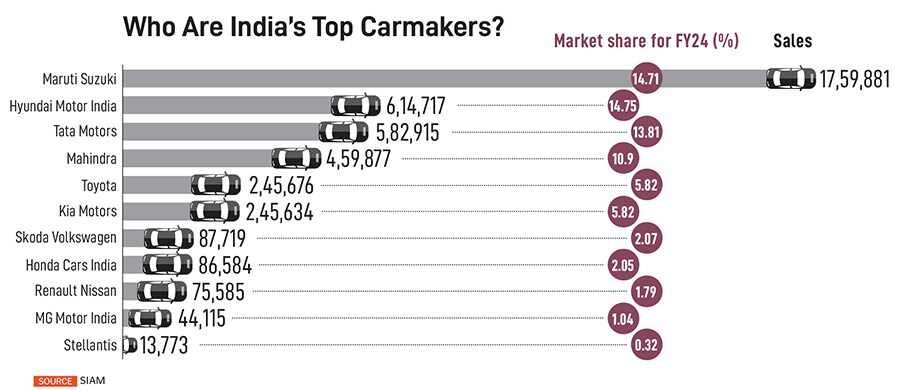
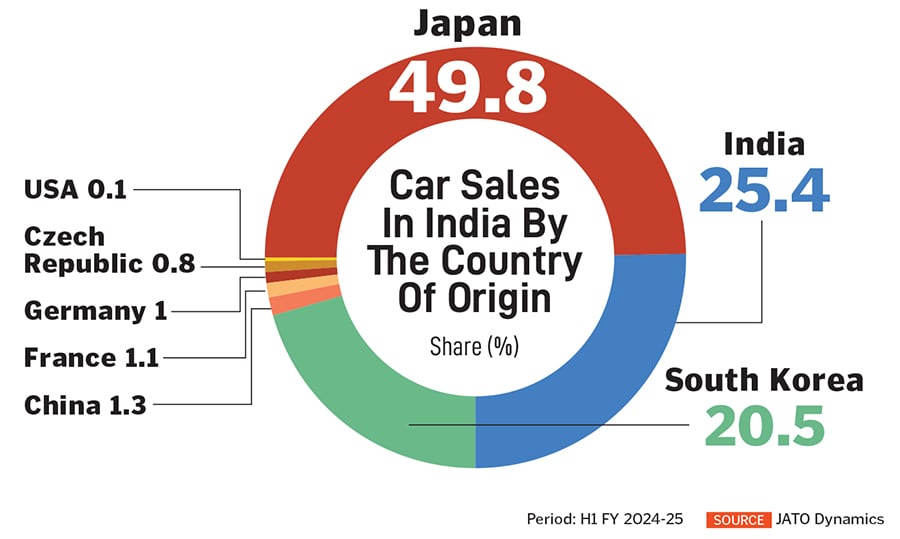

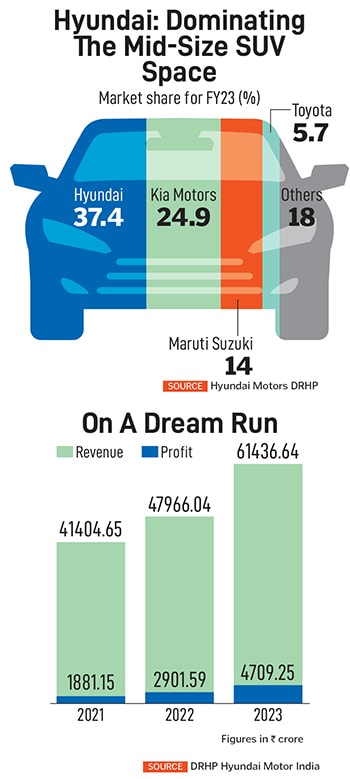 In 2021, Ford Motors quit its India operations after piling up a debt of over $2 billion. Before that in 2017, General Motors had exited India leaving the Stellantis-owned Fiat Chrysler Automobiles (FCA), makers of the Jeep brand as the only American brand in the country. European brands in India currently comprise Volkswagen, Skoda, Citroen, and Renault apart from the luxury carmakers including Mercedes, BMW, and Audi.
In 2021, Ford Motors quit its India operations after piling up a debt of over $2 billion. Before that in 2017, General Motors had exited India leaving the Stellantis-owned Fiat Chrysler Automobiles (FCA), makers of the Jeep brand as the only American brand in the country. European brands in India currently comprise Volkswagen, Skoda, Citroen, and Renault apart from the luxury carmakers including Mercedes, BMW, and Audi.













